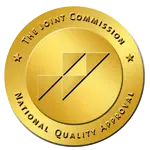Alcohol is the most commonly used and widely-accepted drug of all time. Because of these factors, it is typical for individuals to use alcohol without questioning its safety or potential consequences. Despite what people may believe, alcohol use can lead to an array of short-term and long-term health consequences – even when use is moderated. Becoming familiar with the general effects of alcohol and the potential consequences that can result from use is essential for maintaining a healthy well-being.
All substances interfere with normal neuronal communication in the brain. As a result, substance use can cause disruptions in thought, emotion, and behavior patterns. The National Institute on Alcohol Abuse and Alcoholism (NIAAA) explains that alcohol makes it more difficult for important brain areas to do their jobs. Some examples of brain areas that are affected include those responsible for motor coordination (controlling balance), memory, speech, decision-making, and judgment.
One publication titled “Alcohol Alert” by the U.S. Department of Health & Human Services (HHS) further explains, “Alcohol can produce detectable impairments in memory after only a few drinks and, as the amount of alcohol increases, so does the degree of impairment.” The publication also highlights that:
“People who have been drinking large amounts of alcohol for long periods of time run the risk of developing serious and persistent changes in the brain. Damage may be a result of the direct effects of alcohol on the brain or may result indirectly, from a poor general health status or from severe liver disease.”
It is essential to understand that alcohol use contributes to potentially long-lasting brain changes. This also applies to moderate alcohol use over long periods of time. Although some people perceive pleasure from alcohol use, the pleasure is not worth the impairments such use can have on the brain.
The Centers for Disease Control and Prevention explains, “Excessive alcohol use is a leading preventable cause of death in the United States, shortening the lives of those who die by an average of 26 years.” Excessive alcohol use includes the following:
Understanding the difference between moderate and excessive alcohol use can help individuals better recognize when their alcohol use becomes problematic.
According to the NIAAA, alcohol use disorder (AUD) is defined as “a medical condition characterized by an impaired ability to stop or control alcohol use despite adverse social, occupational, or health consequences.” AUD encompasses all types of alcohol-related conditions, including alcohol abuse, dependence, and addiction. The 2019 National Survey on Drug Use and Health (NSDUH) found that nearly 14.5 million individuals in the United States aged 12 and older had AUD.
There are several factors that contribute to the high prevalence of AUD in the nation. First, consider the normalization of alcohol in today’s society. Due to its legal status and the substance’s social acceptance, alcohol is not easy to avoid. Most families have access to alcohol within their homes, with liquor stores conveniently placed around every street corner. Additionally, many adolescents find themselves experimenting with alcohol use underage due to curiosity about its effects.
Second, alcohol use is often excused as celebratory. Some religions even suggest alcohol use during celebratory gatherings and holidays. Therefore, when individuals begin to develop a problematic relationship with alcohol, it can be challenging to identify and accept. Although it is legal, widely available, and glorified in society, alcohol is not inherently safe to use.
Alcohol use can produce a plethora of health consequences. In addition to developing chemical dependency and addiction, the following are some examples of health consequences that can develop from alcohol use.
The CDC highlights the following short-term health risks while under the influence of alcohol:
The CDC also highlights the following long-term health risks that can result from excessive alcohol use:
Professional treatment is often required to recover from the effects of AUD. However, before participating in treatment, an individual must consider whether or not they will benefit from detoxification services.
Detoxification, also known as detox, is a medically-assisted service aimed at helping clients rid their bodies of alcohol and other drugs. For many seeking recovery, their bodies are dependent on the substance they are attempting to abstain from. The first few hours and days of abstinence can produce a host of uncomfortable withdrawal symptoms, some of which can be life-threatening. Professional detox services help to make this process as comfortable as possible to reduce the risk of relapse.
Following detox, an individual can begin treatment. There are residential and outpatient programs available for individuals seeking addiction recovery. It can be helpful to work with a healthcare professional to determine which treatment route will be the most effective for a loved one. Alcohol use can bring about devastating consequences. However, recovery is possible.
Despite associated health concerns, alcohol use is incredibly prevalent in society. Because alcohol use is both legal and widely accepted, it can be challenging to identify problematic alcohol use in yourself or a loved one. When alcohol use begins to interfere with your ability to function normally in daily life, it may indicate the presence of alcohol use disorder. Pathways Recovery Center can help you work through any feelings of fear and confusion that alcohol has caused to surface in your life. In addition to a variety of treatment interventions, we offer detoxification, inpatient, and outpatient programs to individualize our client care. To learn more about how our programs can help you, call us today at (888) 771-0966.








